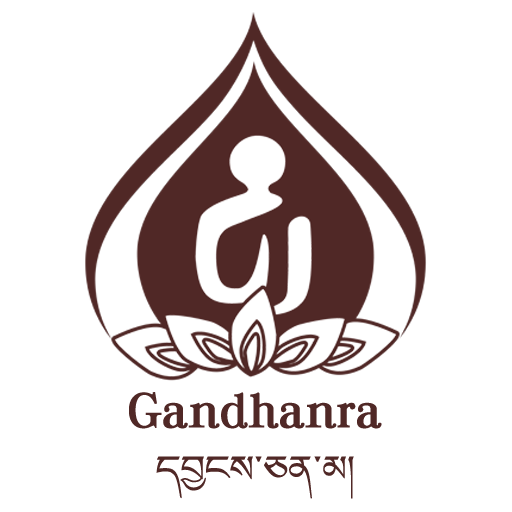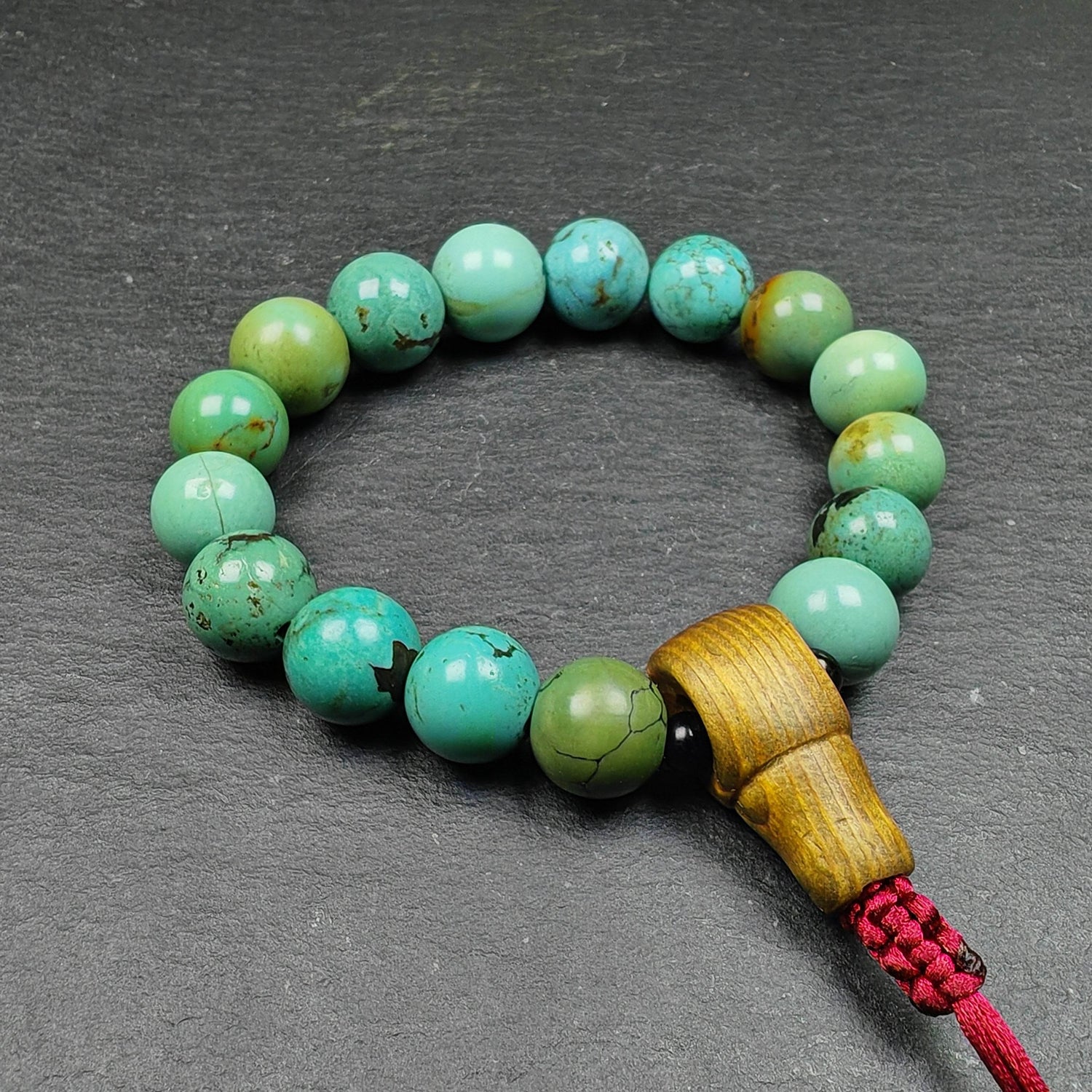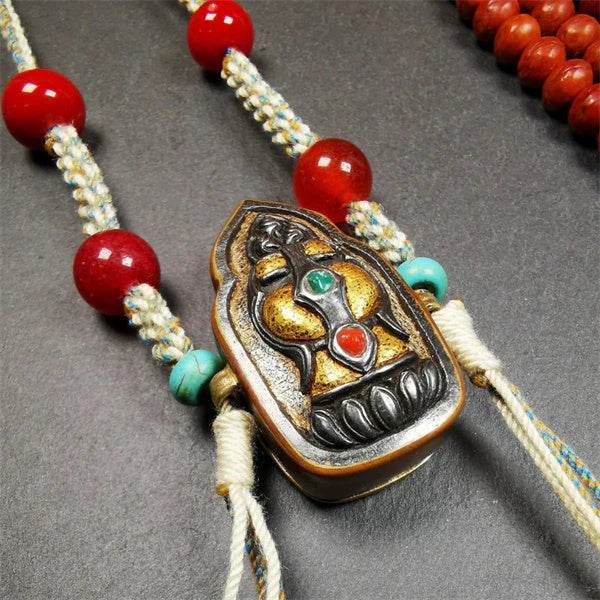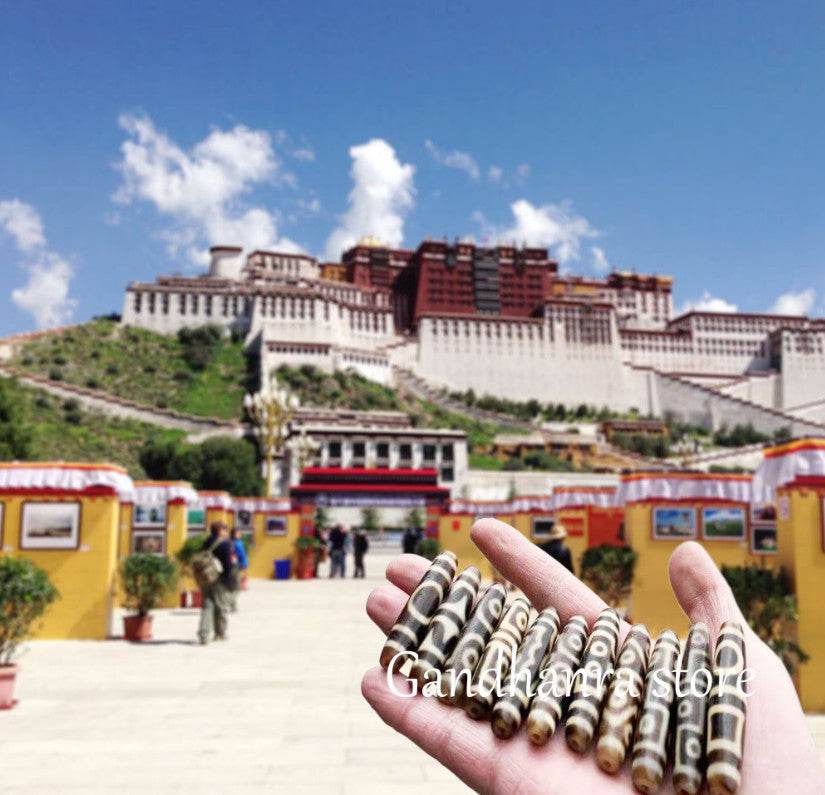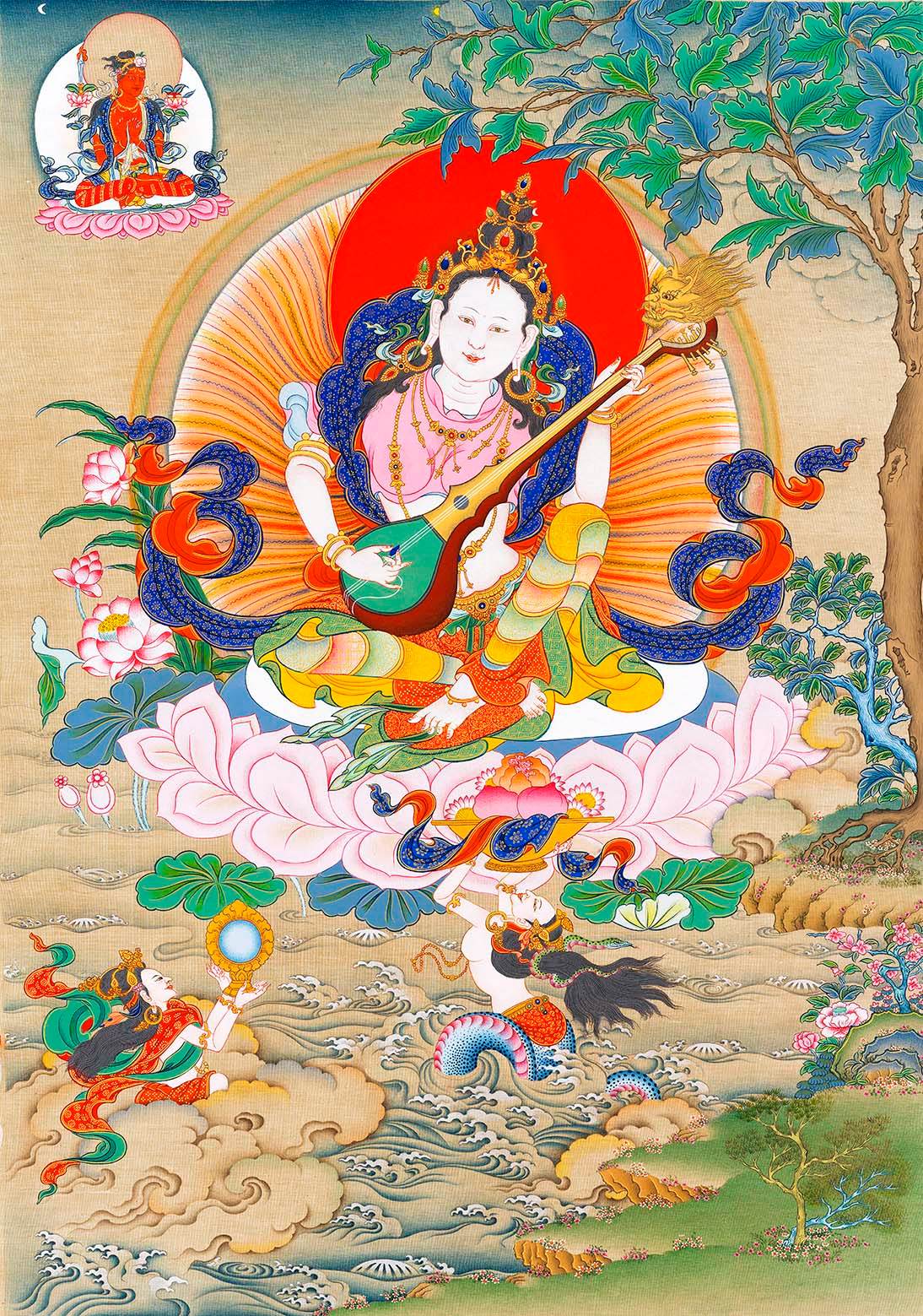
The art pieces in the Prague Art Museum's Tibetan Art collection

"White Wish-Fulfilling Jewel Six-Armed Mahakala"
18th Century, Collection of the National Gallery in Prague

"White Chakrasamvara in Union with Consort from the Ümapa Tradition"
Late 17th Century, Collection of the National Gallery in Prague
This lineage of Chakrasamvara originates from Tsongkhapa's teacher,
Ümapa Sönam Senggé (དབུ་མ་པ་བརྩོན་འགྲུས་སེང་གེ་; ?–1399).
He was known as the "Dreaming Master" (བླ་མ་རྨི་ལམ་པ་)
because he continuously dreamt of his yidam, Manjushri Bodhisattva.

"Yamantaka in Union with Consort"
18th Century, Collection of the National Gallery in Prague
The Tibetologists who once lived in Prague described the Tibetan treasures collected here as "Himalayan miracles under amber domes."
Mgr. Lenka Gyaltso,
Curator of the Asian Art Collection at the National Gallery in Prague.

"The Buddha Shakyamuni" in the 13th century, Western Tibet, housed at the National Gallery in Braga.

"Buddha of Infinite Life and Numerous Bodhisattvas"
Red background painting, mid-18th century, in the collection of the National Gallery in Prague

"Gelsang Thubten Jigme Gyatso"
Gold-ground painting, 18th Century, Collection of the National Gallery in Prague
Gelsang Thubten Jigme Gyatso
(སྐལ་བཟང་ཐུབ་བསྟན་འཇིགས་མེད་རྒྱ་མཚོ་; 1743–1811)
was a prominent figure in the later Gelug tradition of Chakrasamvara practice.
He had numerous Mongolian students from Qinghai and the heartlands of Northern Asia
and maintained close connections with the religious circles of the Qing court.

Detail: Gelsang Thubten Jigme Gyatso in the Form of a Tantric Practitioner
In 1796, a group of Bohemian nobles and middle-class intellectuals initiated a social movement aimed at cultivating artistic taste. They established galleries and libraries to house their previously private collections of artworks and manuscripts, inviting the citizens of Prague to engage in "reading and viewing." They also organized discussion forums to gather opinions on art and culture from people of all social strata, which gradually extended into political discourse. In a sense, these gentlemen, who founded the "Society of Patriotic Friends of the Arts," shaped the unique cultural landscape and atmosphere of Prague (within the Bohemian context) that followed. The National Gallery in Prague, now presented to the world as an architectural complex, is a product of this movement.
For those dedicated to Himalayan studies, Prague is a city of enlightenment for Tibetan research and a hub for academic exchange. Centered around Charles University and the Oriental Institute of the Czech Academy of Sciences (founded in 1922, housing a Tibetan library), numerous influential academic works have been produced. Czech Tibetologists (specializing in the broader Himalayan and North Asian regions) are highly regarded in Western academic institutions for their profound expertise in textual studies. In November 1951, the National Gallery established a dedicated "Department of Oriental Art" (later the Asian Art Collection), and its collection of over 13,000 artifacts was housed in the Kinský Palace, a venue specifically dedicated to showcasing Asian art.

Voitech Chatsil, photographed in the twentieth century.

"The Lotus-style Grupafu Tian of the 18th Century, held in the National Gallery of Prague"

The focal point: central lotus stamen
(The three ancestral masters + living teacher + offering ceremony)

"Maitreya Buddha and the Lineage of Teachings"
Late 18th Century, Collection of the National Gallery in Prague

"Bodhisattva Āryadeva and the Mahasiddhas"
18th Century, Collection of the National Gallery in Prague

"Sipahor - The Six Realms of Existence"
19th Century, Collection of the National Gallery in Prague

In the late 18th century, Mongolia, in the collection of the National Art Museum of Bragg Country.
it was introduced into the folk beliefs of the Mongolian region by the Gelug tradition.
Among these collections, there are the most collections related to Japanese art, while there are also more than four hundred pieces related to the Himalayas and North Asia. Although the number of collections in the art museum is not outstanding in Europe, the collections related to Tibet are considered by the academic community to have clear research labels, such as the Gelugpa belief in Pan-Asia and the late artistic masterpieces in eastern Tibet. Most of the Tibetan collections in the National Gallery in Prague come from the Czech painter and diplomat Vojtěch Chytil (1896-1936) and Josef Martínek (1888-1976), an official of the British Customs Service in Shanghai. In the 1930s, both of them had exhibited their collections in Prague, such as Chytil's exhibition on "Contemporary Art in Tibet, Mongolia, and China" (1936).
From the Third Dalai Lama (1543-1588) spreading Buddhism and training disciples in Mongolia to the Fifth Dalai Lama (1617-1682) formally establishing the Ganden Phodrang regime (1642-1959). The Gelug tradition, as a transregional religious system and philosophical framework, exerted a lasting influence on both the central Qing court and the heartlands of North Asia. The golden-backed paintings of "Gesang Tudeng Jinmei Jiacuo" and "God of War - The Nine Brothers of Fate" mentioned above are artistic works that depict this historical phenomenon.
After experiencing multiple art movements and stylistic fusions (such as the innovative Kagyu Karchak painting school), the eastern areas of Tibet have produced several distinct regional artistic schools. In the National Gallery in Prague, there are two series of works belonging to the eastern areas of Tibet but with different themes: a series of "Jataka Stories of the Buddha" and "Transmission of the Diamond Seat: The Eighty-Four Mahasiddhas" (four pieces in total, similar to the works in the Sera Monastery collection). The former belongs to the new Mentang painting school in the Chamdo region influenced by the Kagyu Karchak painting school (especially the structure designed by the 8th Situ Rinpoche) and requires further research on the subject, while the latter is a Qinzhe school work that stylistically merges the Mentang school (both new and old) with early Kagyu Karchak painting school influences.
 "Scenes from the Life of the Buddha"
"Scenes from the Life of the Buddha"Set of Paintings, 18th Century, Collection of the National Gallery in Prague

Set of Paintings, 18th Century, Collection of the National Gallery in Prague

Set of Paintings, Late 17th Century, Collection of the National Gallery in Prague

Set of Paintings, Late 17th Century, Collection of the National Gallery in Prague


Set of Paintings, Late 17th Century, Collection of the National Gallery in Prague

